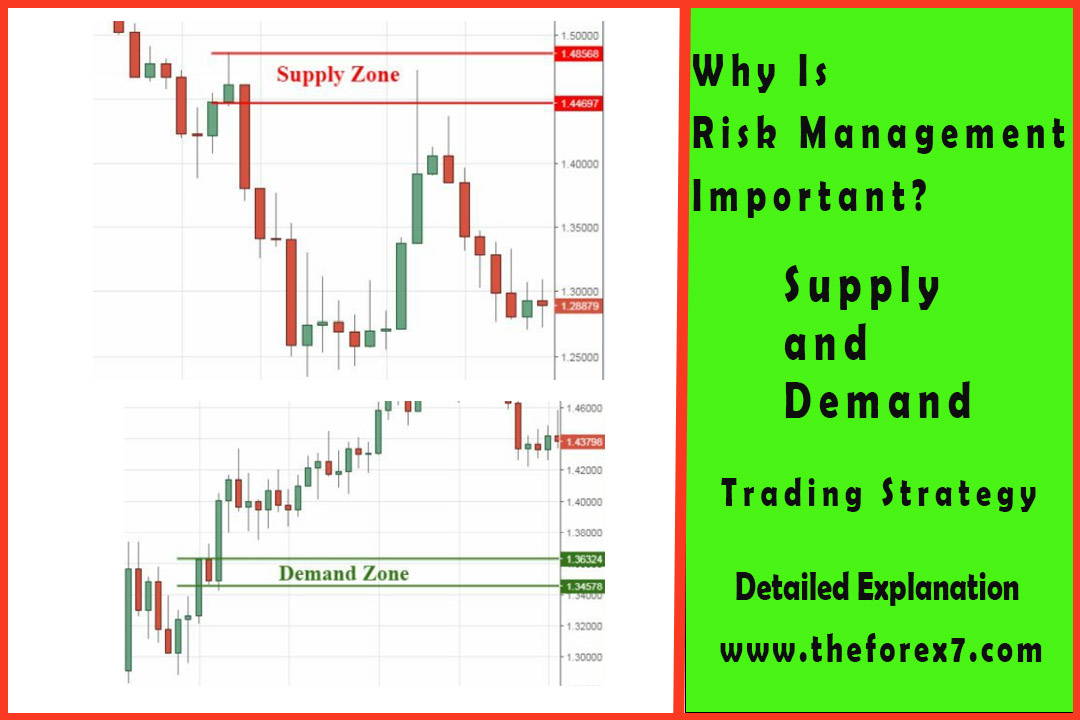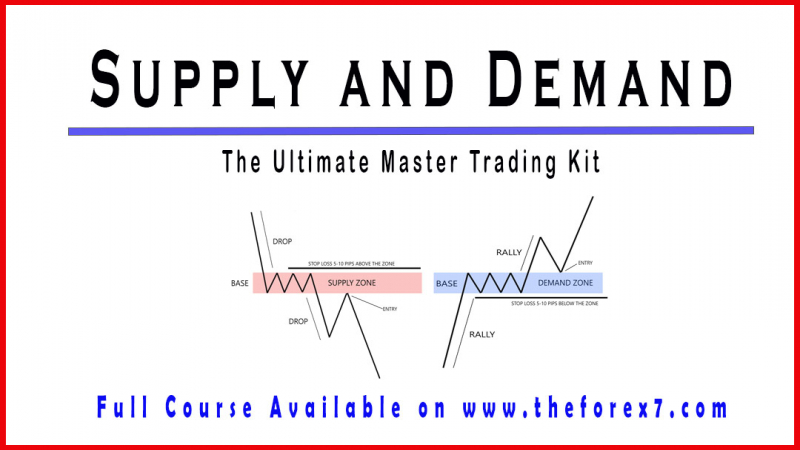Risk Management Supply and Demand Trading Strategy
Why Is Risk Management Important, Trading Plan, Leverage and Lot Size, Correlation and Risk Management, Stop Loss and Trailing Stop
Course: [ Supply and Demand - Trade Like a Pro : Chapter 2. Risk Management ]

Risk management is the most important topics about trading. Why is it important? Well, trading is a business of making money, and to make money you have to learn how to manage your capital and your potential losses.
Why Is Risk Management Important?
Risk
management is the most important topics about trading. Why is it important?
Well, trading is a business of making money, and to make money you have to
learn how to manage your capital and your potential losses.
This is
one of the most neglected areas in trading. Many traders are anxious to get
right into trading without choosing the right lot size for their positions.
When you trade without a risk management plan, you are actually gambling. You
are not looking at the long-term return on your investment. Instead, you are
only looking for that "winning
lottery ticket."
You can
have the best trading system in the world, and still lose all your money in the
market. Risk management will protect your capital from unnecessary losses and
make your account profitable in the long run.
Always Have a Trading Plan
Many
newbies begin trading without a trading plan. This is one of the main reasons
why they keep losing all their money in the market. Even with a trading plan,
if it lacks proper money management, they still lose all their capital.
Strict
money management is essential to achieve long-term profitability in the market.
The high level of leverage threatens the longevity of your capital by exposing
your account to over leveraged positions. Successful risk management plan aims
at preserving your initial trading capital.
Leverage and Lot Size
Leverage
is the amount of a trading position you can control with a given amount of
margin. The leverage ratio is the ratio of that amount of leverage to the
amount of margin. A leverage ratio of 100:1 would mean that you can control
$100,000 worth a position with just $1,000 on deposit as margin.
Retail
traders have to understand this concept of leverage since they are usually
required to trade on margin rather than credit.
This is
where true risk management is important. Brokers in the industry tend to
highlight the benefits of using high leverage. Traders with no risk management
plan place large position in the market aiming for large profit. Instead, they
lose all their money in the market.
Not every
one of us has $10,000 or $5,000 to open an account with that is why you need to
understand the risk of using such leveraged accounts and large lots when you
trade with a small account.
You need
to be as conservative as you can, at least at the beginning. Each trader has
his own risk tolerance level that must stick with it.
By
keeping a smaller lot size will allow you to stay flexible and manage your
trades with logic rather than emotions.
Correlation and Risk Management
Another
way to reducing your potential risk in the market is to include the power of
correlation between currency pairs.
For
example, if you go short on EURUSD and long on USDCAD, you are exposed two
times to the USD, and in the same direction. It means that you are long 2 lots
of USD. If the USD goes down, you have two losing positions with 2 lot size.
Keeping your overall exposure under control will reduce your risk of a call
margin.
Risk
management consists of learning how to control your losses. You have to know
when to cut your losses as early as possible to preserve your capital. Traders
should always trade with a proper stop loss. Once your stop loss is set on your
trading platform, refrain from moving it farther as the market moves. By
constantly changing your stop loss, you will ruin your account at the end of
the day.
Stop
Losses are your emergency exit, and should protect your account when your
positions go wrong. If you set your stop too close to your price, or too far
from your entry, it is going to get hit or get a margin call, and either way
you lose money.
Traders
can also use trailing stops to secure profits as the market moves in your
favor. Trailing stops move your stops as the market moves farther away from
your entry point. The stops will be triggered once the trend changes direction
securing maximum profitability and protecting your account from potential
losses.
Rules of Risk Management
·
If you lose trades consecutively,
you can either lower your trading size by 50%, or take a break from trading.
When you come back, you should trade smaller positions until you start winning
again.
·
Only risk 1% of your capital per
trade. You must avoid opening large positions to make up your losses.
·
Set and forget. Once you open a
position, leave it. If you keep moving your stops, you are only increasing the
risk of making wrong decisions.
·
Keep a trading journal as you
trade. You can record details about your positions and the market conditions.
Keeping a trading log will help you improve your trading skills and learn from
your previous mistakes.
·
Stick to your strategy. You
cannot change your plan just because you lost two or three trades. Losing
trades is part of the equation, and by sticking to your strategy for a period
of time you can then assess its reliability.
·
Do not take losses personally. It
is not your fault the market is not moving in the desired direction. Instead, you
need to adopt a neutral trading style.
·
Do not let losing trades run.
Protect your capital from unnecessary losses. The sooner you cut your losses,
the better you preserve your capital.
·
Do not jump on a trade just
because you see the price moving down or up. Instead, wait for the market to
retrace back and be prepared to enter at the right moment.
·
Never trade money that you cannot
afford to lose. Always trade money that won't affect your daily life.
·
Always use a proper stop loss
with your trades. Don't let the market swipe off all your balance. Stop loss
will stop your positions from losing any further money from your account.
Reward-to-Risk Ratio
Another
way to increase your profitability is to choose trades that offer a 3:1
reward-to-risk ratio. This means that you have the potential to make three
times more than what you are risking. You can use this reward-to-risk ratio as
a filter to help you cherry-pick trades with low risk and high reward.
Now, if
you go short on EURUSD and you are risking 53 pips, you would need 166 pips as
your reward. By doing this, your reward-to-risk would be near 3:1 ratio.
Keep in
mind that this reward-to-risk ratio must be adjusted depending on your trading
style, the market environment, and the time frame you are using. For example, a
swing trader could have a reward-to-risk ratio of 9:1 while a scalper could be
somewhere near 0.8:1.
Conclusion
Supply and Demand - Trade Like a Pro : Chapter 2. Risk Management : Tag: Supply and Demand Trading, Forex : Why Is Risk Management Important, Trading Plan, Leverage and Lot Size, Correlation and Risk Management, Stop Loss and Trailing Stop - Risk Management Supply and Demand Trading Strategy
